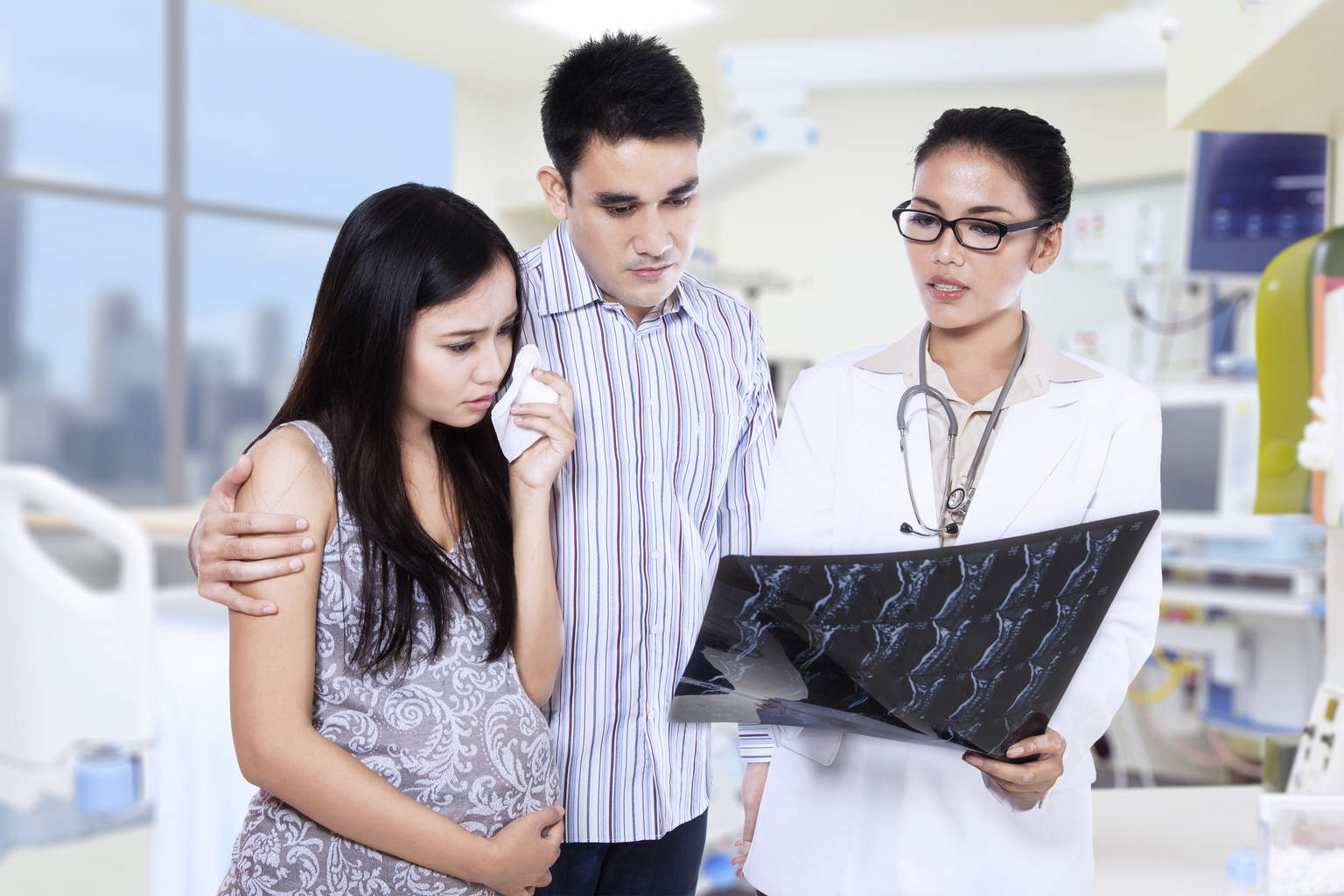Contents:
- Medical Video: Breast Cancer in Pregnancy | Gina's Story
- Detect breast cancer during pregnancy
- Breast biopsy during pregnancy
- Test to study the stage of breast cancer
Medical Video: Breast Cancer in Pregnancy | Gina's Story
Diagnosed with breast cancer during pregnancy is a very rare case. However, more and more women decide to have children at an older age, and the risk of breast cancer increases with increasing age. Therefore, doctors estimate more cases of breast cancer during pregnancy in the future.
Breast cancer is found in about 1 in every 3,000 pregnant women. Breast cancer is the most common type of cancer found during pregnancy, during breastfeeding, or in the first year after giving birth. This cancer may be called pregnancy breast cancer (pregnancy-associated breast cancer/ PABC).
Detect breast cancer during pregnancy
When a pregnant woman has breast cancer, this cancer is often diagnosed in the late stages than if the woman is not pregnant. Breast cancer may also have spread to lymph nodes, partly because of hormonal changes during pregnancy. Pregnancy will stop the monthly menstrual cycle, and increase estrogen and progesterone levels increase. Prolactin, a hormone that signals the breast to prepare for the breastfeeding process, also increases. This change in hormones causes the breast to change. The breasts may enlarge, clot, and become soft so that the woman or doctor is more difficult to realize a lump due to cancer until the lump becomes very large.
Another reason breast cancer is difficult to detect early may be because during pregnancy screening breast cancer is often delayed until the time for delivery arrives. Pregnancy and breastfeeding also make breast tissue dense, so that cancer in the early stages is more difficult to find with a mammogram. In addition, the initial change because of cancer is easily misinterpreted as a normal change that occurs with pregnancy. A delayed diagnosis remains one of the biggest problems associated with breast cancer in pregnancy.
If you find a lump or are aware of any changes in the breast, respond seriously. If the doctor does not want to examine it with a mammogram type test, ask about other types of imaging tests such as ultrasound or MRI. You might need a second opinion. Changes in any suspicious breasts must be examined or even biopsied before assuming that they are a normal response to pregnancy.
Mammograms can find most breast cancers that begin when a woman is pregnant, and are believed to be safe enough to undergo a mammogram during pregnancy. The amount of radiation needed for a mammogram is small. Radiation focuses on the breast so it does not reach other parts of the body. For additional protection, lead protectors are placed on the lower abdomen so that radiation does not reach the fetus. However, scientists are not sure about the effect of radiation with the smallest dose even in unborn babies.
Even during pregnancy, early detection is an important part of maintaining breast health. Talk to your doctor or nurse about breast examination and the best time for the next mammogram. As always, if you find a lump or change in the breast, tell your doctor or nurse immediately.
Breast biopsy during pregnancy
Lumps or abnormal test results may be worrying, but a biopsy is important to find out whether changes in the breast are cancerous or not. During a biopsy, a piece of tissue is taken from the area that might be affected. Breast biopsy is most often done using a needle. This is usually done as an outpatient procedure (even in pregnant women). Doctors use drugs to anesthetize the breast area that is involved in a biopsy, which is a little risky to the fetus.
If the needle biopsy does not provide an answer, a surgical biopsy is the next step, which is to take a piece of tissue with a slight cut of the breast. Surgical biopsies are often carried out with general anesthesia (where anesthesia is used to put the patient to sleep), the risk for the fetus is very small.
Test to study the stage of breast cancer
If breast cancer is found, other tests may be needed to find out whether cancer cells have spread in the breast or other parts of the body. This process is called staging. Staging very important for pregnant women with breast cancer, because cancer tends to be found at a later stage (the tumor may enlarge and have spread to areas other than the breast). Test staging may be needed depending on your case.
Overall, this test is considered safe and can be used if important. However, contrast material (coloring) which is sometimes used in MRI enters the placenta, the connecting organ of the mother and fetus. Coloring has been associated with fetal abnormalities in animals in the laboratory. Therefore, MRI with contrast dye is not recommended during pregnancy, but MRI without contrast may be used if necessary.
Chest X-rays are sometimes needed to help make treatment decisions. They use a small amount of radiation and are considered safe for pregnant women if the stomach is protected.
Fetuses are more at risk of exposure to radiation due to other tests, such as PET scans, bone scans, and CT scans. This test is rarely needed, especially if the cancer only attacks the breast. For some of these tests, the doctor may be able to adjust the test procedure to limit the amount of radiation exposure to the fetus if a test is indeed necessary.
In rare cases, cancer has reached the placenta, which can affect the amount of nutrients for the fetus from the mother, but no cases of breast cancer are reported that are transferred from mother to fetus.












